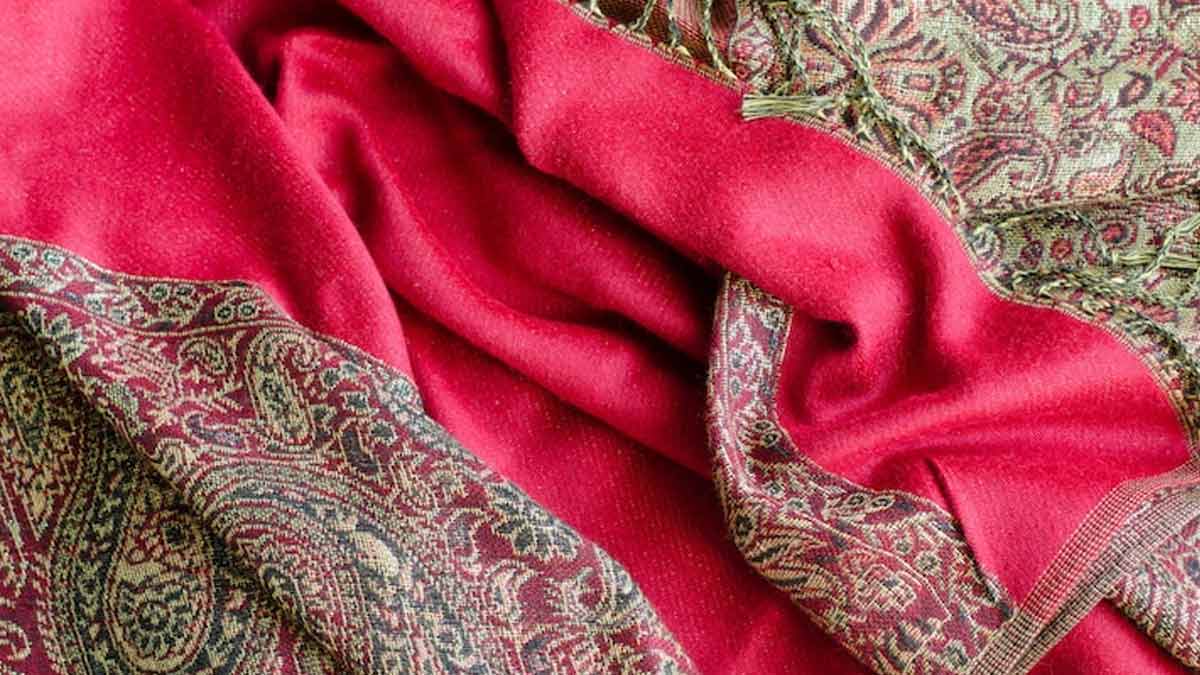
Pashmina To Bhujodi: A Dive Into Popular Woollen Weaves Of India
Indian craftspeople are known for their intricate work. Almost every state has a region where a community of artists weave their magic to bring about a splendid piece of clothing. From Jammu & Kashmir to Tamil Nadu, you can search for hand-crafted textiles from different parts of the country.
Since this is the winter season, we are here to talk about the woollen weaves that have a special place among fashion enthusiasts. The craft may be ancient but the workers in the traditional handloom factories are still trying to maintain the legacy.
Here are three popular woollen weaves from India.
Pashmina

Image Courtesy: Pashmina
Pashmina is believed to have come into existence in the 15th century. Artisans have handed it down over generations and preserved the craft. If you have ever gone to purchase a pashmina shawl, you would have come across shopkeepers making claims that you can pass a true pashmina through a ring.
Well, that is true! You can say that it is the hallmark of a pure pashmina weave. Weavers spend hundreds of hours entwining every thread into a fabric that can be used for other purposes.
It is known that the Mughal Emperor Akbar became a fan of pashmina. He was the one to invent the style of Doshala. The Mughal influence is also evident in the thread work, including the Gool-e-Noor-Jahan.
Pashmina requires finesse which not every craftsperson can bring about. It is mostly done in Kashmir and the regions of Ladakh. The process starts with the herding and rearing of Pashmina goats found at 4500 m above sea level.
Bhujodi

Image Courtesy: D'Source
Bhujodi is believed to be almost a five centuries old traditional weave from regions of Rajasthan and Gujarat. The Rabari community is involved in making these. Bhujodi shawls feature extra-weft designs on a plain warp.
In modern-day Gujarat, Kutch, a small village known for organising the most vibrant festival in India, is where the art is practised. The artisans mostly create shawls and stoles with this weave.
If you have ever been to the Kutch festival, you would have found shops selling vibrant pieces in the Bhujodi weave. It takes about 10 to 12 days to finish one shawl. If there is an intricate design or pattern weaved into a piece, it could take months for an artisan to finish it.
Don't Miss: Alia Bhatt Lehenga Inspirations For This Wedding Season
Art is passed down from one generation to the next. Little kids learn this style of weaving by watching their elders. The distinguished work of art is worth collecting.
Kullu Weave

Image Courtesy: Google Arts & Culture
Kullu, as the name suggests, is a weave pattern found in the hill station located in Himachal Pradesh. The art came into existence on the wool trading route and is inspired by Kinnauri weaves.
Don't Miss: Year Ender 2022: 5 Celebrities Who Slayed In Monochromatic Style
This particular weave is used to create shawls and woollen caps using a four-pedal loom. The weaving is done in the natural shade of the wool, and colourful geometric patterns are added along the edges. Some patterns are intricately woven with a message behind them.
Also watch this video
Herzindagi video